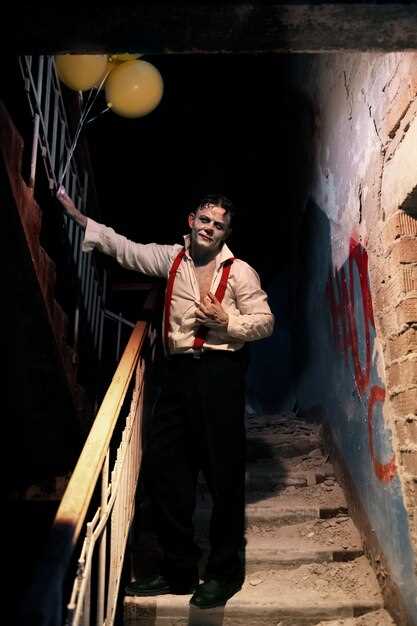There, basement rehearsals showed how the doing of lines shaped the rhythm of the scenes; many moments began as tentative reads that the camera later refined into material that fans still quote. The actor’s loves for the roles came through as energy shifted from the basement to the lot, into the broad screens of the movies, already resonant with audiences.
Across interviews archived online, contributors such as donnelly pin down dates and anecdotes, with quotes circling the web via google; these pieces help explain why the enduring performances and why the public, apart from critics, keeps returning to those scenes and to the iconic coaching of the leads.
As the narrative unfolds, the focus on the most recognizable roles reveals how casting choices, on-set dynamics, and the music all fed a momentum that might magnify engagement for fans across generations. This energy persists.
To build a robust understanding, gather primary quotes, compare early press notes with later retrospectives, and map how the relationships around the star grew from the basement to a broader, enduring fandom.
Grease Oral History: The John Travolta Sizzle in Context
always map the impact by tracing how early rehearsals translated to screen magic; notes from thurm and donnelly show how pacing, camera choices, and the producer’s direction let the numbers sing with heart. this approach helps you become attuned to how backstage decisions shape what audiences remember as the sizzle.
there are concrete ways to measure influence: track the soundtrack’s chart performance, count the spins of key singles, and review press clippings that mention the cast and the party atmosphere outside the theater. from rydell high to the gym floor, the context mattered, turning a simple musical into a shared ritual that fans remember with a smile.
the rizzo arc offered tension and agency, and the girls’ harmonies provided contrast to the guys’ energy. the producer kept the tempo brisk, allowing each number to cut to the heart; audiences say it felt both rebellious and charm-filled. the moments that worked often leaned into the magic of small choices – a look, a pant, or a line that landed just-right – and that is where the pearl of the piece shines.
| Aspect | Evidence | Impact |
|---|---|---|
| Early rehearsals | thurm, donnelly notes point to pacing and rhythm | set tempo and actor chemistry |
| Cast dynamics | sang together in tight harmonies; rizzo-led scenes | strengthened audience connection |
| Production choices | producer-driven pacing; wardrobe, sets, and lighting | created lasting party-energy aesthetic |
| Audience reception | google archives, fan reports, theater memos | helped sustain cultural footprint |
Pinpoint Travolta’s moments that shaped the film’s iconic vibe
Recommendation: Trace moments where singing together sparks this core musical vibe, then map what they reveal about the characters and the rhythm of the whole piece.
Pinpoint pink-lens moments where energy flips from playful to electric, and where girls interactions with frenchy give the rhythm its warmth, signaling a national mood of rebellion softened by humor.
frenchy moments anchor the group’s dynamic, showing how small acting choices shape the tone; these scenes mix laughing with dramatic beats and feed into the musical’s momentum.
barry’s editorial instincts show in brisk cuts that push immediate reactions, letting laughing land and songs breathe, ensuring the togetherness of scenes remains tight.
Auditioned elements include the lead’s and supporting players’ entries; those choices let them work together as an ensemble, with each character bringing a distinct voice while contributing to a better, cohesive vibe.
The star sits at center stage; its aura reads as national icon, a paramountsportsphotoallstar moment that blends sharp dialogue with big singing numbers; the privacy of set moments only adds realism, inviting repeated viewings for hidden craft and the different layers at play.
Think about the way girls share lines and look at each other, creating a sense of them working together rather than competing; that dynamic makes the feel both intimate and broad, and it shows what a good musical can achieve when performances stay disciplined and playful.
Dissect the wardrobe and styling that defined his sizzling look
Start with a fitted leather jacket over a crisp white tee and dark pants to craft a perfect silhouette. The ward wardrobe capsule centers on clean lines: jacket shoulders tapered, tee crisp, and pants cut slim with cuffs rolled above the ankle.
Hair relies on a thick pomade to build a slick, side-part crown with a controlled shine. A thurm pomade provides long-lasting hold, letting him stay on point through singing, dance, and camp-ready moments.
Footwear anchors the look: dark leather loafers or oxfords, a slim belt with a matte buckle, and minimal accessories to keep the upper silhouette dominant. Roll the cuffs just enough to reveal a hint of sock and maintain a streamlined profile that reads perfect on camera.
Auditions framed the vibe: the actor’s confident posture, the rhythm in the shoulders, and a dinah-inspired sense of precision–though kept light for camp energy that reads well on screen.
In chicago shoots, a vivid version circulated through production stills. The account paramountsportsphotoallstar tracked the wardrobe’s impact on movement. The producer newton-john urged practical action over pose, pushing for a version that could hold through long takes and quick camera moves.
Fans love the balance of charm and edge; this look loves camp energy and reads differently from modern trends, yet remains instantly recognizable in films. If youre aiming to recreate it, start with the ward pieces and tailor the fit so every motion lands with confidence; though you should keep it lean and adaptable to stage or street. Laughing on set, the crew captured the same energy across accounts, and the star’s presence carried the vibe through the whole experience, heart.
Gather on-set anecdotes revealing influence on scenes
Document every on-set tweak that changes blocking, timing, or props, and map it to the moment’s impact on tone and audience response.
-
Relatable energy in the gym sequence: barry redirected the entrance to a staggered, casual walk, so the lead looked more like a teen from rydell. The shift kept the tempo lively and created a relatable moment on screen, which felt good, and the ensemble energy appeared more natural. Many crew members noted the change looked stronger on camera.
-
Newton-John’s timing in the duet: newton-john adjusted breath and syllable placement to land with the drum loop; through this, the performance carried a warmer rhythm and the interaction with the ensemble read better on screen. The moment still carried camp energy while sounding less mechanical.
-
Plastic prop choice: a plastic locker detail replaced a metal unit; the brighter, camp sheen matched the film’s tone. Many in the crew said the look appeared sharper on camera and contributed to the overall vibe.
-
Mother moment at the doorway: the mother appeared at a pivotal pause; the delivery landed with warmer cadence; the line carried more weight and strengthened the emotional through-line for the audience.
-
Choreography and blocking: barry and the dance team tested three different ways to stage the big chorus beat; the final cut kept a two-beat pause before the chorus, allowing the screen to breathe and the music to land better, which improved the overall impact.
-
Screening notes from a chicago test audience: the camp tone resonated, prompting a trim of extraneous movement to keep momentum; the new pacing showed in the screening and guided the edit decisions.
-
Work with the ensemble: the cast built scenes together, and the energy from other performers influenced the delivery; this collaboration is a reminder that films benefit when them and the lead are aligned through repeated runs in rehearsal rooms.
-
Through-lines from art-direction and music team: the same approach used in other films by the creative team created a smoother connection between screen energy and audience reaction; applying that in new projects helps a production stay relatable and better paced.
-
Final takeaway: on-set anecdotes reveal how a single prop, a pause, or a shift in pace can make a scene read as relatable, camp, and engaging; keep these lessons in mind for future musicals and screen-driven productions.
Chart the fan and press reception to Travolta-centric moments
Recommendation: Build a four-quadrant map that charts fan sentiment and press tone across each major moment, with sources clearly cited.
- Data sources and channels
- Fans update their views via newsletters, forums, and screening events; track mentions, photos, and outfits, including pants shots and style parades, to gauge engagement. Data from multiple channels improves reliability.
- Press coverage spans reviews, wire copies, TV guides, and columnist roundups; extract adjectives, verdicts, and tone to form a baseline.
- Events like basement screenings and summer-long tours provide direct signals on energy and mood; record attendance and Q&A notes to quantify enthusiasm.
- Privacy considerations shape who speaks publicly; interviews with figures like dinah and jamie illustrate boundaries and what fans want to see next.
- Sentiment and voice mapping
- Compute a sentiment score for each moment: positive, mixed, or negative; link to the original source and date for transparency.
- Look for recurring motifs: admiration for the star, affection for musicals, and pride in the crew’s collaboration; note when stories or headlines mention girls, loves, or best moments.
- Track language around privacy; cautious headlines often precede more affectionate pieces, signaling a nervous edge in early coverage.
- Event moments and visuals
- Screening clips, musical numbers, and backstage photos rouse fans; observe whether crowds looked energized or reserved, and how quickly they respond.
- Summer-long cycles across theaters and clubs yield different vibes; some audiences were eager, others kept a measured distance, especially away from paparazzi.
- Audience fashion acts as a data point: pants silhouettes, retro jackets, and era-appropriate looks help explain coverage shifts.
- Strategic recommendations for studios, press offices, and fan clubs
- Publish a monthly newsletter featuring behind-the-scenes notes, quotes from the best crew, and a story arc overview; keeps the tight-knit base engaged while protecting privacy.
- Encourage angles that celebrate variety: different tones in musicals, and respectful portraits of the star’s work and contributions.
- Offer controlled screening opportunities and short Q&As with representatives from the dinah and jamie circles to balance access with privacy.
- Coordinate lightweight online surveys to gather feedback on upcoming plans, leaning on fans’ love of movies and the storytelling behind the scenes.
Analyze the choreography and musical numbers credited to his presence
Compile verified credits first, then cross-check with screening notes, casting sheets, and google searches to attribute numbers to his presence. For this, start with the opening, then compare the next version documented during promotion, and coming revisions, and confirm which items belong to the on-screen sequence.
The movement sequences tied to his presence fuse brisk alignment, crisp entrances, and a playful energy that feels like magic on screen. In opening numbers, the energy lands in a compact space, with background players reacting to his beat; this shows why casting sought a specific version for the off-broadway run and city screenings. The loves for style echo in moments when frenchy and dinah share space while singing, a dynamic that still serves as the replacement for earlier takes.
Costume choices reinforce the tempo: slim pants align with brisk steps, while plastic prop items punctuate punchlines. From experience, the look already signals a shift in tone between the city street vignette and the screening of the school-set number; very often the props accompany a quick cut to the screen, creating a visual memory that sticks. This version emphasizes the visual joke without overloading the frame; opening shots keep the focus on the line, the reaction, and the pantomime that underlines the music’s drive.
From a critical angle, the on-screen presence contributed to the casting’s confidence and the stage-to-screen transition; the promotion team leaned into a compact star persona that informed next re-edits and replacement takes for off-broadway testing. The screening archive shows how the team leveraged the energy to sell the musical, and the city press used the performance as a focal point. This again demonstrates why listeners remember the moment, with dinah and frenchy playing off the lead’s vibe while singing in tandem, building a magnetic moment that endures in the memory of the audience. This is the only reliable memory anchor.

 John Travolta Was Sizzling Hot – An Oral History of Grease">
John Travolta Was Sizzling Hot – An Oral History of Grease">

